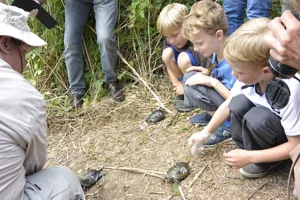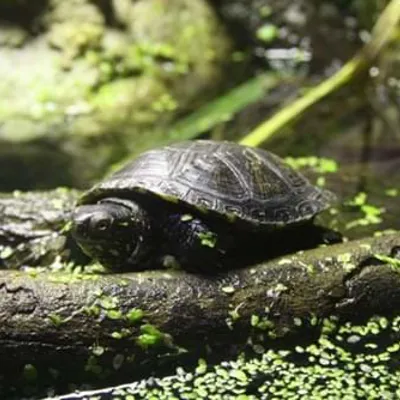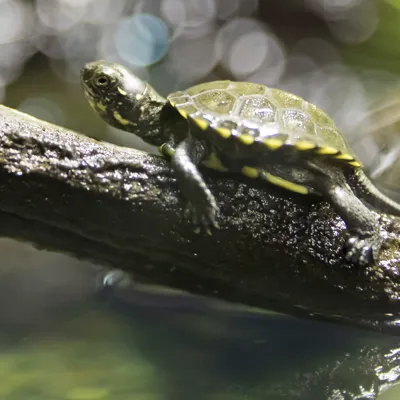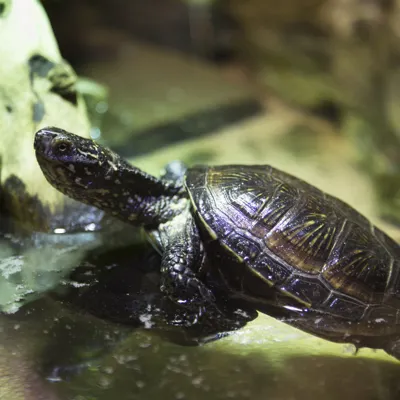
Back into the wild
The European pond turtle belongs to the genus Emy. It is the only turtle species with natural occurrence in Germany. However, the species is endangered and is widely considered to be extinct. As a cooperation partner, SEA LIFE Hanover supports the reintroduction efforts of the formerly indigenous turtle species through the NABU Lower Saxony. SEA LIFE Hanover raises young animals for this. When the animals have reached a size of at least 8 centimeters, they can be released into the wild.

At home in the waters of Europe
The turtles prefer stagnant and slow flowing structured waters with a muddy bottom. They can be found in ponds, in silted areas of lakes, in swamp areas, and in oxbow lakes of rivers. In addition to the bodies of water, the animals need open, sun-exposed areas nearby for their eggs. However, they are not only widespread in Central Europe, but also in the southwestern part of North Africa up to the Aral Sea.

Predators
Unfortunately, the Emys also have natural enemies. The young are mostly victims of wild boars, foxes, seagulls, martens or predatory fish such as pike and catfish. Raccoons are also a threat even to adult animals, as they can open the turtles' shells.

Reproduction of the Emy
The sexual maturity of the European pond turtle can vary greatly depending on the habitat. In the waters of Spain, the male becomes sexually mature as early as the age of four, but in colder areas sometimes not until the age of 18. Mating usually begins immediately after the winter rigor in February / March. The males drive the females into the water, cling to their shells and fertilize the females after they pull their heads back into the shell and thus release their sexual organs.